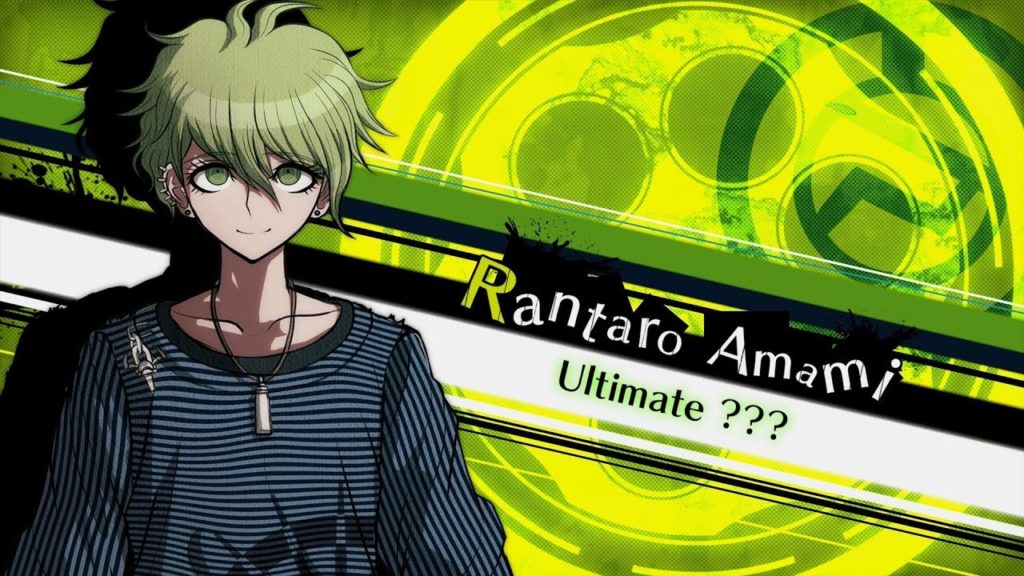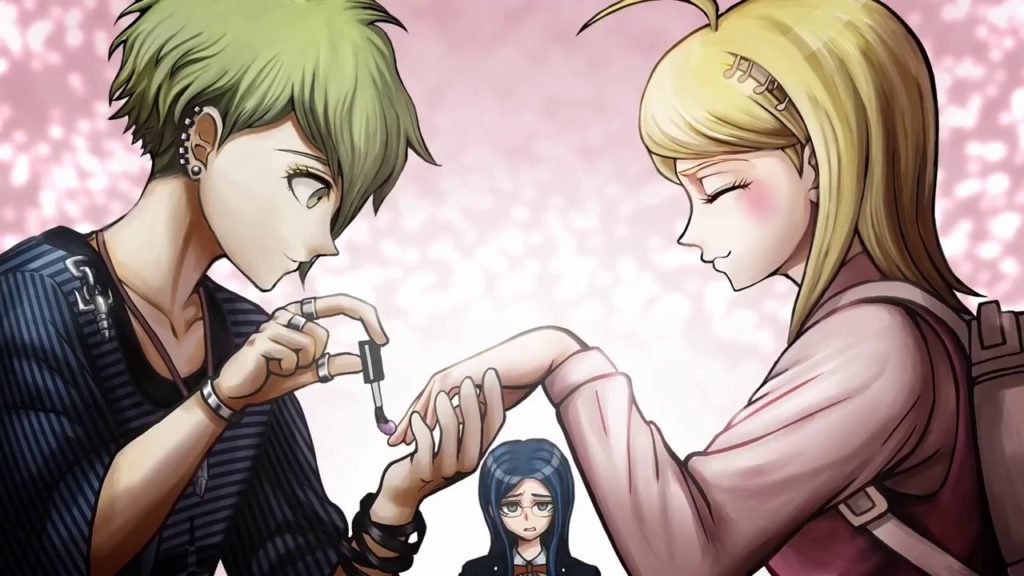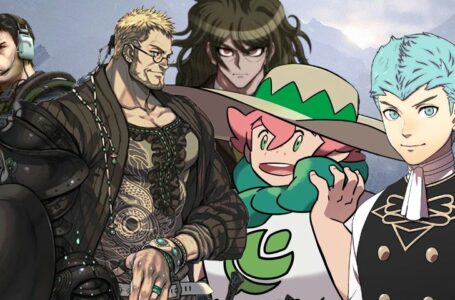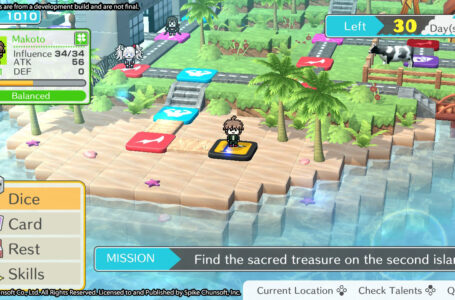Hump Day Husbandos: Rantaro Amami (Danganronpa V3)
The weird and wild universe of Danganronpa is chock full of charismatic and lovable characters, with the majority of them being prime candidates for Hump Day Husbandos.
The popularity of mysterious soft boy Rantaro — whose voice was provided by Hikaru Midorikawa (Ayato Sakamaki from Diabolik Lovers, Shiki from Togainu no Chi and Akihiko Sanada from Persona 3) — resulted in Danganronpa’s creator Kazutaka Kodaka wanting to do more with the character. And we can all safely say that he is not the only one who craved for much more Rantaro action.
Spoilers ahead.
I’ll be the first to admit that my concerning amount of affection for both Nagito and Kokichi makes both of them a questionable pick for my Hump Day Husbando choices. So for the sake of everyone’s opinion on me not kicking the bucket as of now, my backup husbando of the Danganronpa universe is the one-scene wonder that is Rantaro.
Rantaro, despite being seen far too little, due to being the first victim in the killing game, somehow manages to make a memorable and commendable impression in his short time on screen.
With Rantaro’s chapter being possibly the best first case in the whole Danganronpa trilogy — if only for its shock factor — the player quickly becomes familiar with his character and unique quirks. And when he’s brought back into the picture for the endgame with some even more surprising revelations, it brings things nicely full circle. But that’s just summing it up; let’s get into the details.
A well characterised and fully realised Danganronpa cast member

In the case of Danganronpa’s “first case victims”, it’s easy to assume each of these tragic characters would be less deep or not explored as much compared to the many other, longer surviving characters.
But while Sayaka’s arc in Danganronpa: Trigger Happy Havoc sends a message of how desperation can be the ultimate driving force towards meeting your own end, Rantaro’s situation does well in not just setting up the initial motivation for the third killing game in the series — one quite unlike what we’ve seen before — but later hearkens back to it.
His existence adds a much-needed layer of depth to this oft-criticised first case; it features an unreliable narrator that feeds the player deliberately false information, leading to some greater surprises later on.
The reveal of Rantaro’s true identity and background in the latter part of the game makes the first case — and the way it plays out — all the more necessary to deliver this particular revelation. As one of the very few clues that hint to the truth behind V3’s killing game among so many red herrings and false memories, Rantaro excels in being both a plot device (yes, I will admit), but also being his own fully realised and very lovable character.
As the only character who does not know his Ultimate in V3, he sticks out, even with his much more grounded personality compared to the rest of the cast. However, some small hints are there that there might be something greater to him; the groundwork is set as early as his introduction.
The game even reminds you of his relevance to the narrative after his death, with his Ultimate Lab never being open for exploration, further adding intrigue to the mystery surrounding him. So the beauty of Rantaro is not all superficial, as he is cleverly presented to be so normal and grounded that he couldn’t possibly be suspicious — making his character revelations all the more surprising.
His cautious nature, analytical mind and level-headed judgement were all surprising traits to see for a character in his situation. For anyone who caught on to the more subtle, unusual sides to his personality, it made the final revelation all the more clever for being pulled off so effectively — because it was never overdone.
Not only this, but the way that his character was set up to be similar to Nagito with his shadier sprites and expressions is rather splendid. The same can also be said for his uncertainty over his Ultimate; this is the same issue Kyoko faced in Danganronpa: Trigger Happy Havoc. The parallels between such characters add even more shock value to his early exit — and wider implications to the story.
A mysterious and cool kind of guy

Speaking of his character, we have so much more to cover in his personality in order to truly highlight why he is so appealing.
Both he and Kaede separately put it upon themselves to bring down the Mastermind in Chapter 1 of Danganronpa V3. And while both of their actions result in each other’s demise, their motivations for putting themselves at risk for the greater good of the strangers around them is a truly admirable trait — and should be telling enough of why Rantaro qualifies as a husbando. But for even more proof, we thankfully have a few extra scenes to explore for maximum Rantaro content.
In the bonus scene of Chapter 1, we get a glimpse at more admirable traits of his character. His surprising knack at painting nails was due to him helping his younger sisters with it, alongside other duties a good big brother must do to make his siblings feel entertained and cared for.
However, his Free Time Events later reveal a surprising amount of trauma underneath his cool and laid-back exterior, since he has lost a lot of people he once cared for. While it is played up for a certain amount of dark humour — he lost all 12 of his sisters, which is approaching that unwritten boundary between “tragedy” and “statistic” — the loss highlights yet another impressive trait of his and one that aligns with the overall theme of Danganronpa: he carries on with life and does not give up hope.
His trauma explains his many vulnerabilities, making him all the more relatable for his flaws. It explains why he is not willing to become close to anyone else, and on top of that, his anxiety over his lost memories and being unable to protect his sisters makes him feel that others would mistrust him. And despite how intelligent he is, his uncertainty in himself is shown through his uncomfortable laughs — used as a shield whenever he has to explain himself — and his disbelief in himself can be seen by him not taking compliments well. How cute.
Even after death, Rantaro still aided in defeating the Mastermind — and even helped bring an end to the killing game once and for all.
While Rantaro is often regarded as a missed opportunity for his intriguing Ultimate not being fully utilised, his early exit is understandable; he would have been far too valuable otherwise. It is perhaps disappointing to admit, but Rantaro’s character was used appropriately — he didn’t overstay his welcome, nor was he given too little depth for his time on screen. Kodaka managed to strike a happy medium between the two, leaving Rantaro as a memorable and significant participant in the Danganronpa killing game — and one with plenty of fans.
Join The Discussion
Rice Digital Discord
Rice Digital Twitter
Rice Digital Facebook
Or write us a letter for the Rice Digital Friday Letters Page by clicking here!
Disclosure: Some links in this article may be affiliate links, which means we may earn a small commission if you make a purchase after clicking on them. This is at no additional cost to you and helps support Rice Digital!
- Sigh of the Abyss: Shadow Bonds – Prologue Review - October 7, 2023
- Is She The Wolf? is wickedly addicting TV - October 6, 2023
- The steady consumption of Slow Damage - October 5, 2023







